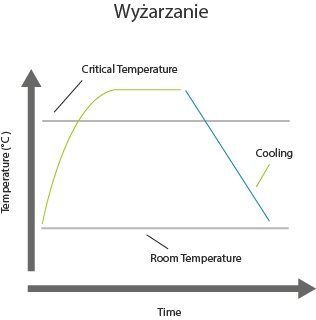Annealing is a heat treatment process that changes the physical and sometimes chemical properties of a material. The annealing process involves heating the product to a temperature above the recrystallisation temperature, holding it at that temperature and then cooling it in a controlled manner. The rate of cooling depends on the type of metal being annealed. Steel is usually cooled in air, while copper, silver and brass can be cooled slowly in air or quenched rapidly in water.

Annealing
Type of technology
Development phase
Level of innovation
Scale of production
mass
Technology readiness level TRL
Description of the technology
Purpose of use
change in mechanical properties of the material/workpiece (improved plasticity at the expense of strength)
Use in industry
reproduction of uniform physical properties of materials/components previously subjected to other processing methods, e.g., plastic processing (stamping, drawing), machining (generating large amounts of heat or material displacement), welding (residual stresses of material exposed to elevated temperatures)
Alternative technologies
- none
Visualisation of action
Advantages
- improves workability of materials
- reduces hardness
- increases plasticity and machinability of materials
Disadvantages
- annealing time
Workpiece material types
- all material groups
- ferrous metals
- non-ferrous metals
- non-ferrous metals alloys
Examples of products
- steel pipes
- exhaust systems
- aluminum sheets
- wings
- fuselages
- rolled blades and knives
- copper wires
Implementation of the technology
Required resources
- heat furnaces
Required competences
- on-the-job training
Environmental aspects
Expert evaluation
Development centers
- AGH University of Krakow
- Institute of Metallurgy and Materials Science of Polish Academy of Sciences
- Warsaw University of Technology
- Cracow University of Technology
- Łukasiewicz – Upper Silesian Institute of Technology
- Czestochowa University of Technology
Legal conditions
- none
